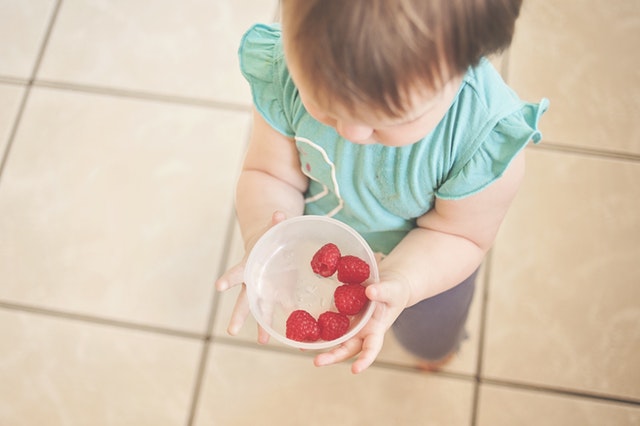
Babies grow at an incredibly fast rate. As moms, we tend to be on the ball with tracking baby development by month to ensure we’re giving our little ones everything they need. Before you know it, they’ll be 6 months old and both you and your child will be entering a new stage: eating solid foods.
Introducing solid foods to your baby can be fun and exciting. However, it will require a lot of planning, researching, cleaning and hard work on your part. This is because you can’t feed your child just any food you have at home or whatever you’re already eating.
If you want your child to get the additional and crucial nutrients he needs for healthy growth and development, you have to carefully select the foods he will eat. In addition, you have to go through the process of getting your child to eat solid foods properly, too.
Foods to Give Your Baby
If you want to feed your baby only the best, most nutritious foods during his first weeks of eating solids, make sure you include the following in his meal plans:
1. Cereals
Most pediatricians will always include cereals in the list of foods you should give your baby when he’s ready for solids. As such, cereals should be one of the first solid foods you should be feeding your baby.
If you are just starting to introduce solid foods to your baby, choose a single-grain variety such as pure oats, barley or rice instead of mixed ones. Also, when preparing the cereal, avoid adding sweet ingredients such as honey, juice or even mashed bananas.
Don’t tempt your baby to eat with sugar because he’ll soon want everything you offer to taste sweet.
2. Vegetables
One of the important goals you have to achieve when introducing solid foods to your baby is to make sure your child starts getting more nutrients. Vegetables, of course, are great sources of different vitamins, minerals, and nutrients. They are also safe for babies to eat since they are not likely to trigger allergies.
When preparing vegetable dishes for your baby, choose mild yellow or orange options first such as carrots and pumpkin. You can introduce greens such as peas, string beans, and kale later on since they have slightly stronger flavors.
Among the numerous types of veggies, two stand out as the best for babies:
- Sweet potatoes
If you’re looking for a complete superfood that’s safe for your baby, a sweet potato is pretty close. This root vegetable is rich in beta-carotene, vitamin A, potassium and other kinds of vitamins, minerals, and nutrients.
Sweet potatoes are easy to prepare and are more flavorful than regular spuds or potatoes. You can also add or combine sweet potatoes with other ingredients to make your baby’s meal more nutritious.
- Beans and lentils
Beans and lentils are some of the most nutritious foods around. They contain high levels of iron, protein, folate, zinc, and manganese – nutrients that your baby needs for proper growth and development.
To make sure you are feeding beans and lentils safely to your baby, soak them for several hours (overnight is best), drain, rinse and cook them until they are soft. Puree or add them to soups or stews if your baby is at least nine months old and can eat more varieties of foods and dishes.
Don’t worry if your baby doesn’t seem to develop an immediate liking to veggies. Keep feeding your baby the pureed or mashed veggie and he will soon learn to like it. Just be patient.
3. Avocado
Saturated fat and cholesterol are essential for a baby’s brain and nervous system development. Avocados contain high amounts of monounsaturated fats and, as such, should be a staple in your child’s diet. Avocados also have a mild taste and smooth consistency which babies like. Like sweet potatoes, they are easy to prepare and they can be added to other dishes as well.
4. Eggs
Eggs are rich in various nutrients including iron, folate, choline, protein, vitamins A, D, and E. They are also easy to digest so they won’t cause any digestion problems. You can prepare them in various ways, too. Simply mash the yolk of a hard-boiled egg and thin it with breast milk, formula or water to the right consistency that your baby likes. Chopped hard-boiled egg and scrambled eggs or omelets cut into thin strips are also perfect as finger foods for your baby.
5. Meat and fish
Chicken, beef, lamb, and other kinds of meat are rich sources of iron, protein, riboflavin, niacin, zinc and vitamin B6 – nutrients that your baby also needs. It is therefore important that you introduce meat to your baby as well.
If you’re ready to feed your baby meat, make sure it is pureed to a smooth texture since babies can choke on finely chopped meat. You can also add the pureed meat to mashed vegetables so that you can also start introducing other textures to your child.
DHA is an important nutrient that helps in the development of a baby’s retinas and brain. Fish, especially salmon, herring, and tuna, are great sources of DHA. As such, you should be feeding your baby fish, too. Simply bake or steam a boneless fillet of fish, mash or puree it, and thin it to a smooth consistency with some water.
With some creativity, hard work, and patience, you can get your baby to start eating nutritious foods even at an early age. This will be the valuable foundation your child needs to enjoy good health now and in the future.




